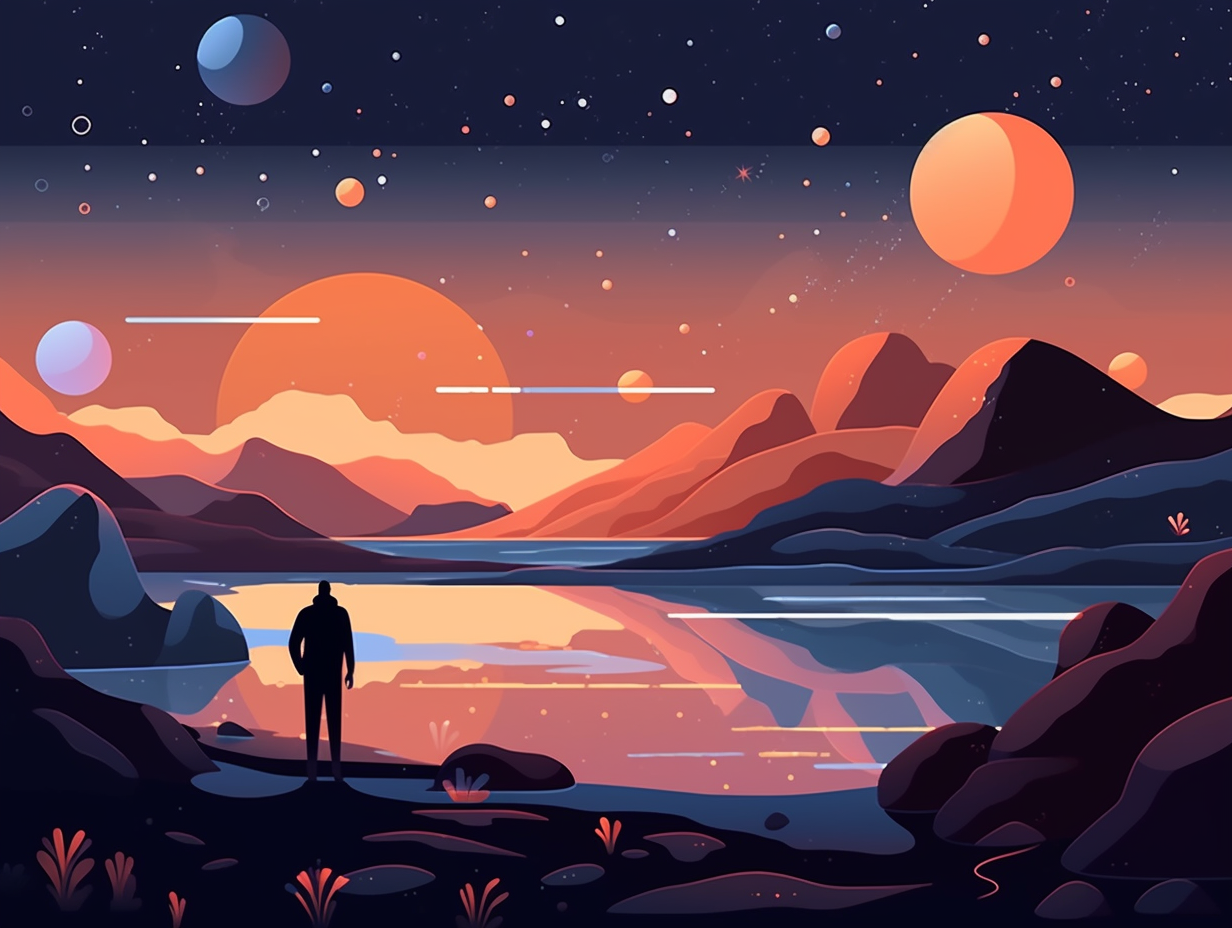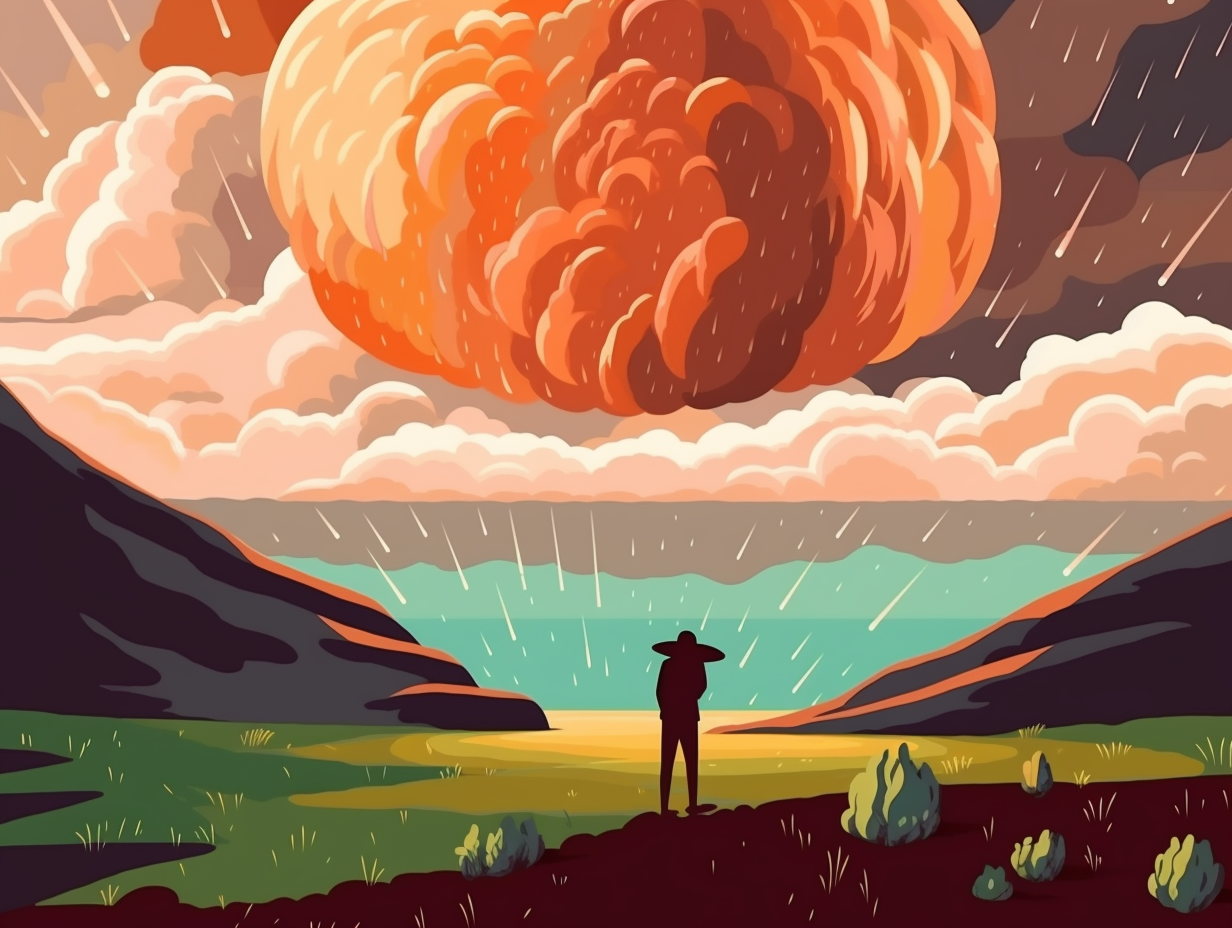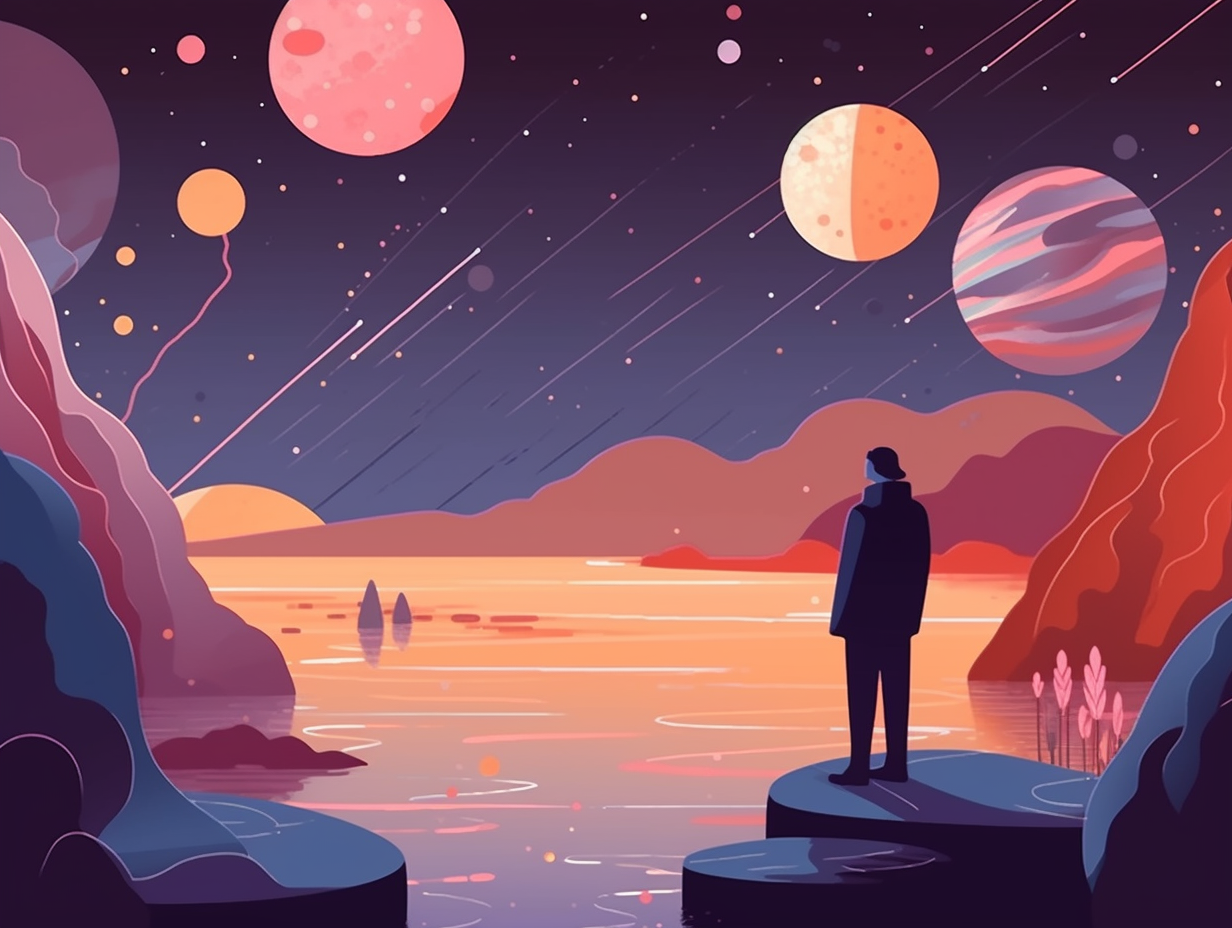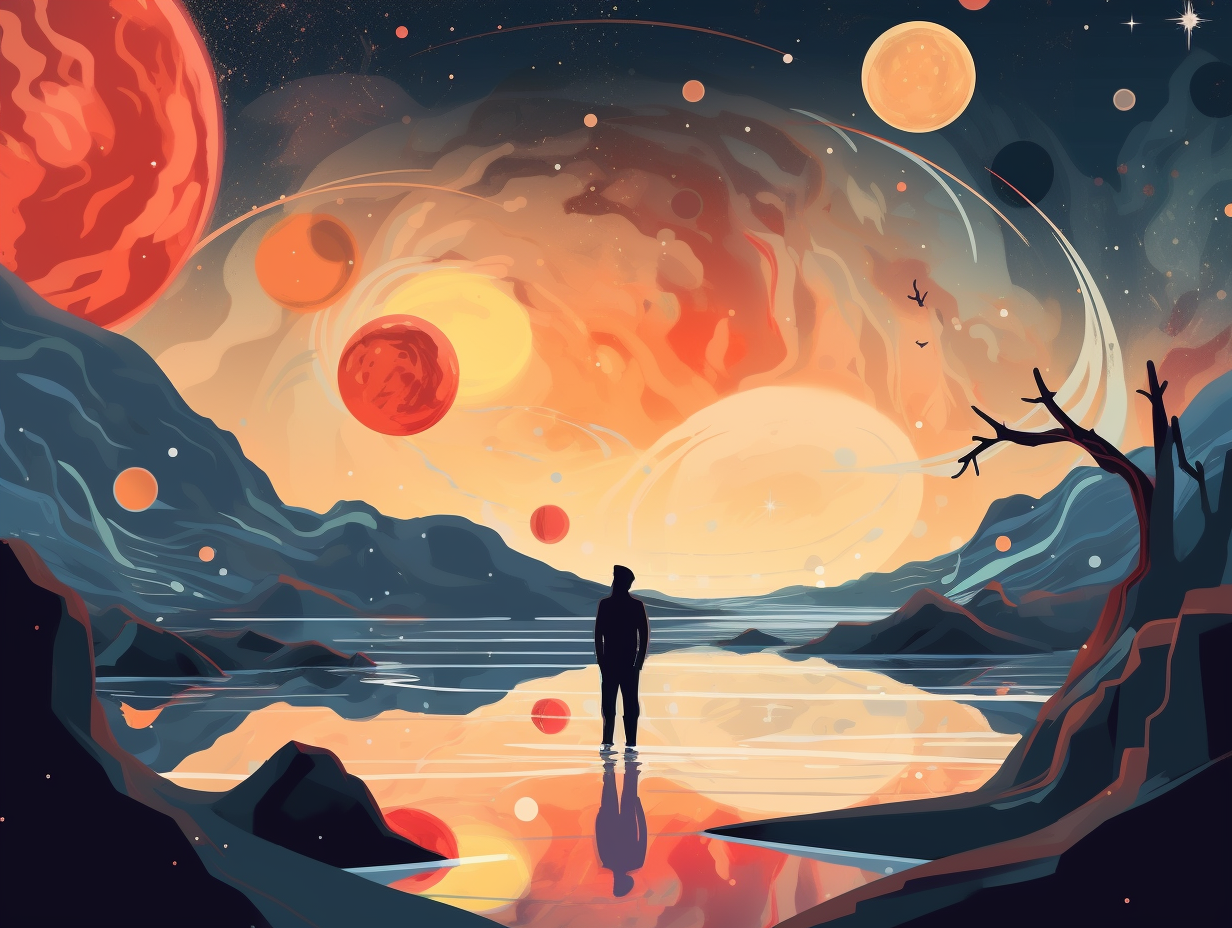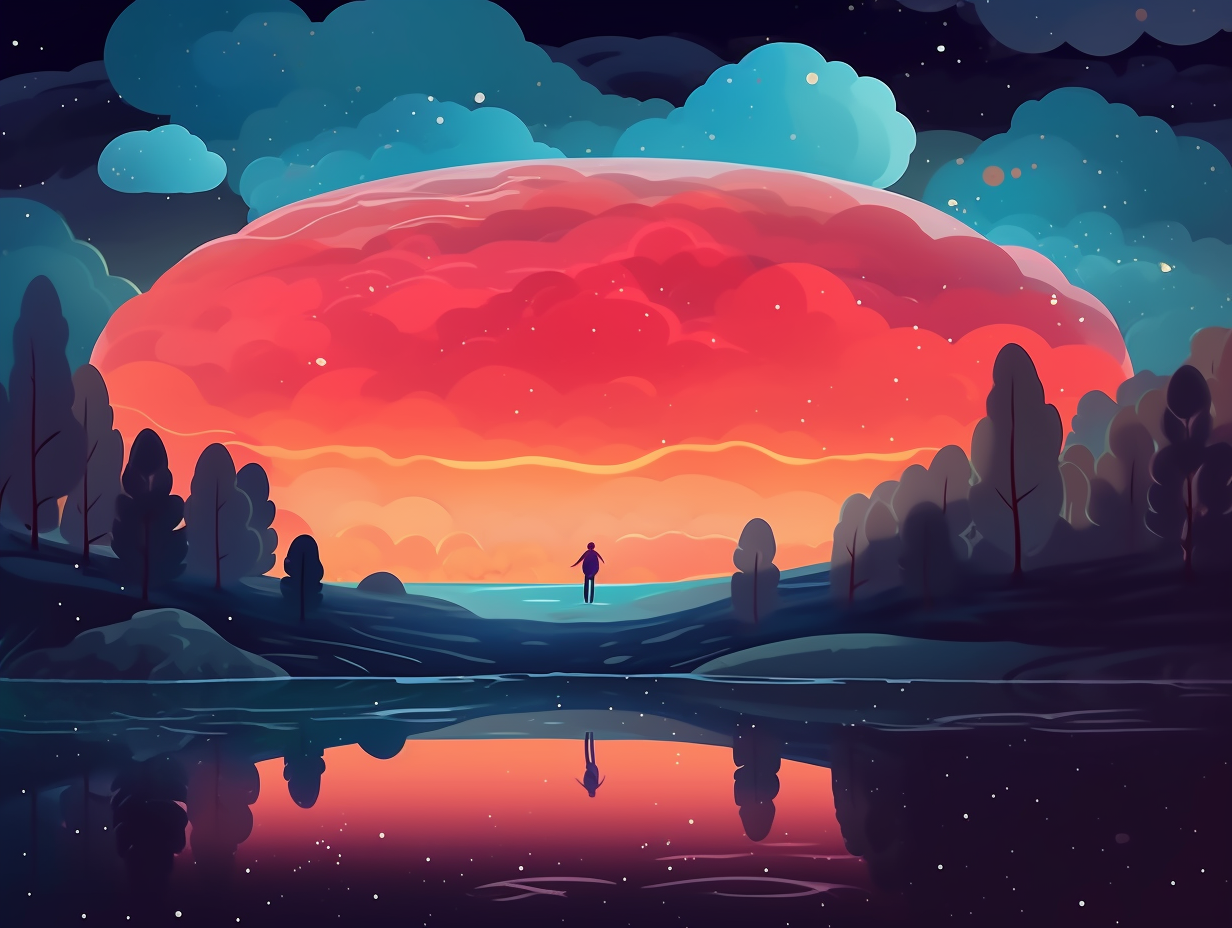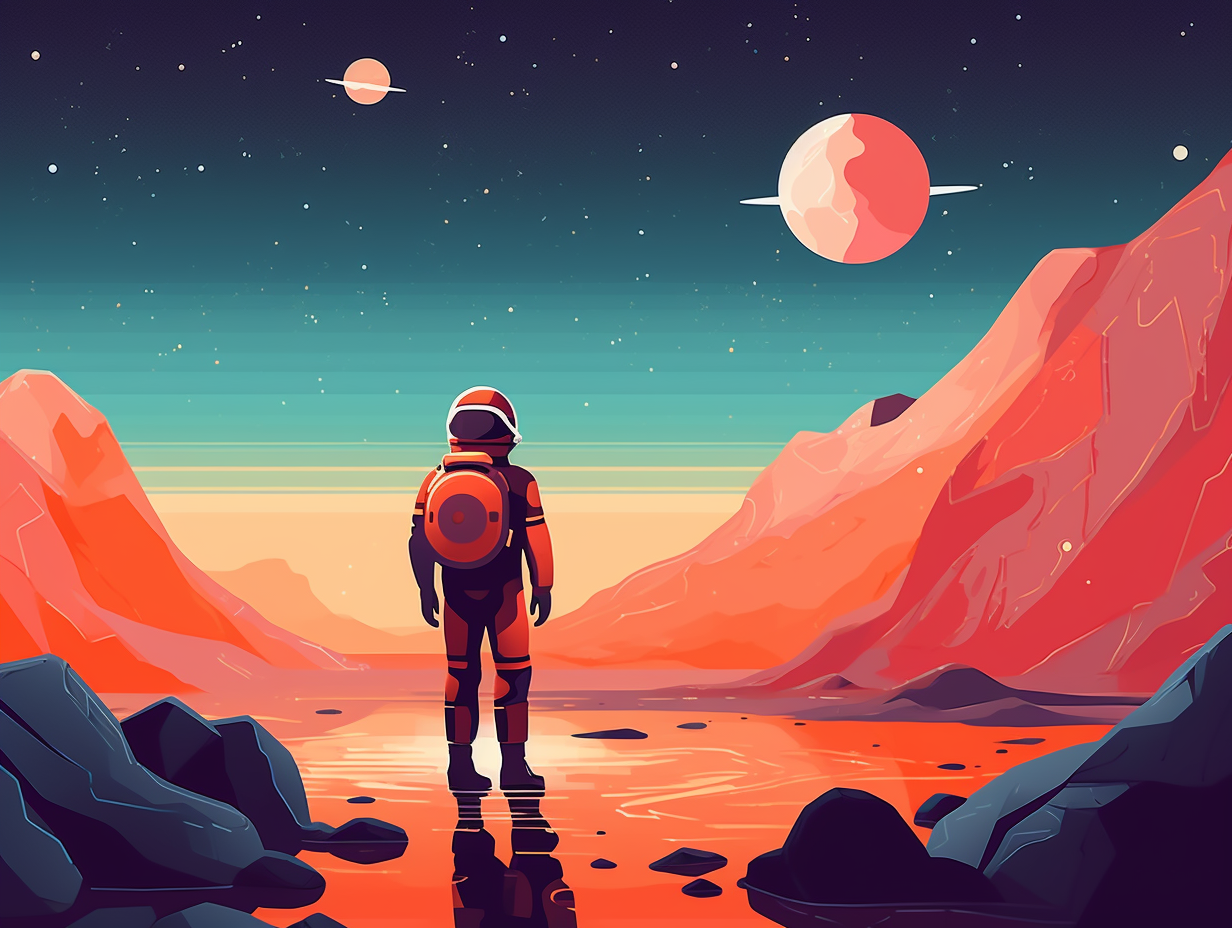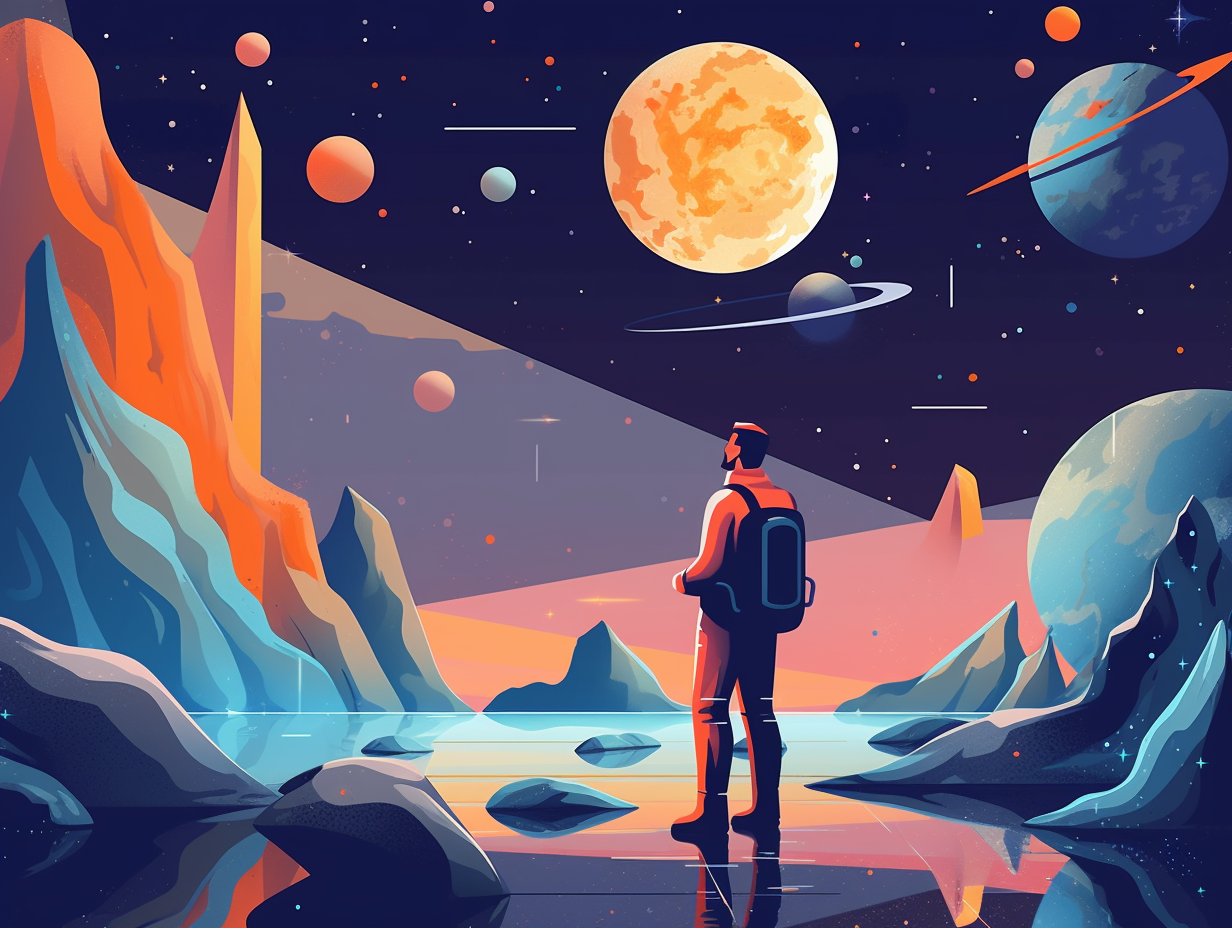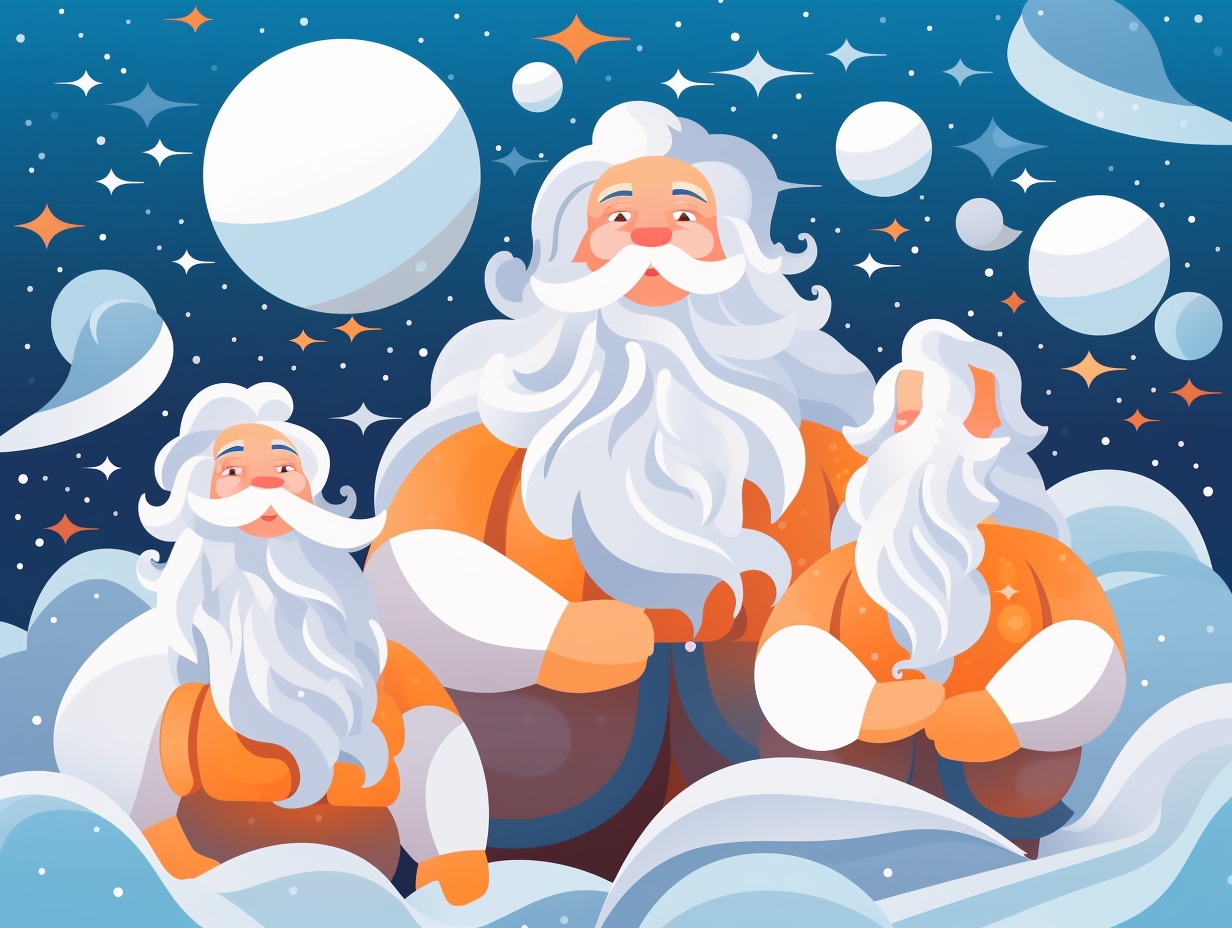Unraveling Cosmic Secrets: Top 14 Fun Facts About the Asteroid Belt You'll Love to Discover!

1. Cosmic Billiards and Planetary Palettes
Next time you're playing cosmic billiards, don't forget to chalk up your asteroid cues: The asteroids in the belt between Mars and Jupiter actually orbit in a torus-shaped region, not flying around hitting each other like billiard balls. They also come in a variety of sizes, from the dwarf planet Ceres to smaller rocky bodies, and are categorized into carbonaceous, silicate or metal-rich types based on their spectra - quite the planetary palette!
Source => en.wikipedia.org
2. Galactic Garage Sale
Who knew the asteroid belt was the ultimate planetary garage sale of the Solar System, featuring both dusty antiques and shiny collectibles? Surprise, surprise: It's a cosmic assortment of remnants from the formation of gaseous giants like Jupiter and Saturn, as well as rocky scraps left over from the birth of terrestrial planets like Earth, Mars, Venus, and Mercury – showcasing a real-life, out-of-this-world jumble sale.
Source => space.com

Did you know that asteroids are like cosmic Lego bricks, constantly building and breaking apart in the universe? Discover their fascinating categories and how NASA monitors them for Earth's safety.
=> Fun Facts about Asteroids
3. Where's Waldo: Asteroid Edition
In a cosmic game of "Where's Waldo," the asteroid belt is like a chaotic family reunion of space rocks trying to out-hide each other in the vast void of the Solar System: Seriously though, the four largest objects in the belt – Ceres, Vesta, Pallas, and Hygiea – account for around 60% of its mass, despite the millions of other objects residing there. To add to the family drama, the asteroids are spaced an average of one million kilometers apart, giving them plenty of room to avoid unwanted collisions.
Source => en.wikipedia.org
4. Spaced-Out Bumper Cars
If you're picturing the asteroid belt as a cosmic bumper-car arena, you might be sorely disappointed by the spaced-out reality: in truth, the average gap between asteroids is so vast that standing on one would render the next nearest neighbor utterly invisible without a powerful telescope.
Source => scientificamerican.com
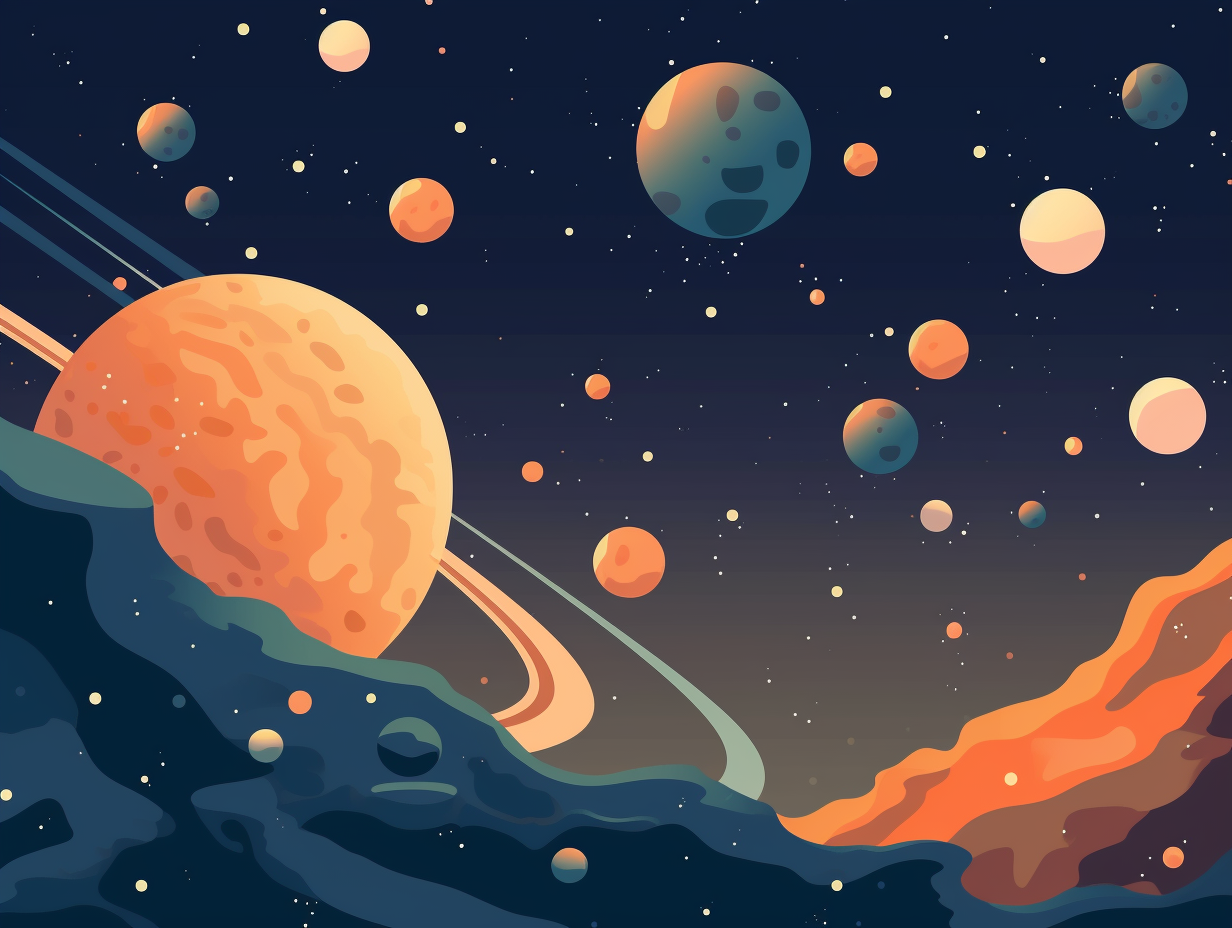
5. Charcoal Space BBQ
If a galaxy-wide BBQ was in order, the asteroid belt would cook up quite the variety, with the C-types providing the perfect grilled-charcoal aesthetics: These dark, carbon-rich asteroids aren't just celestial showstoppers, but also the most ancient objects in our solar system, flaunting their gray flair since time immemorial.
Source => nineplanets.org
6. Cosmic Weighing Scales
Don't bother weighing yourself in the asteroid belt to make light of an extra meal, as there's a cosmic caveat: The entire mass of the asteroid belt is just 3% of our Moon's, less than Pluto's, and only twice that of Charon, Pluto's largest moon.
Source => en.wikipedia.org
7. Ancient Carbon Scrolls
It's a bird! It's a plane! No, it's just your friendly 4.5-billion-year-old cosmic bit of charcoal: C-type asteroids comprise about 75% of all known space rocks and are made mostly of carbon. Dull as they may be, reflecting a measly 3% of sunlight, they're crucial in understanding the origins of our solar system – much like the ancient scrolls of interstellar history.
Source => astronomysource.com
8. Jupiter, the Celestial Bouncer
In the cosmic version of "keep your friends close, but your enemies closer," the asteroid belt stages a tranquil dance between Mars and Jupiter, with Jupiter acting as the bouncer of this celestial ballroom: Interestingly, it's the gravitational influence of Jupiter that maintains the calm and stable nature of the asteroid belt, preventing its myriad of rocky inhabitants from engaging in head-on collisions and forming a planet.
Source => missionjuno.swri.edu
9. Minefield vs. Hollywood Drama
Navigating the asteroid belt is a bit like traversing a celestial minefield in a Hollywood blockbuster, except far less dramatic and hardly as risky: Spacecraft have a collision probability of less than one in a billion, largely due to the vast distances between the millions of asteroids in the belt, a fact supported by missions like Pioneer 10 and New Horizons which have traversed the region unscathed en route to exploring the outer reaches of our solar system.
Source => ripleys.com
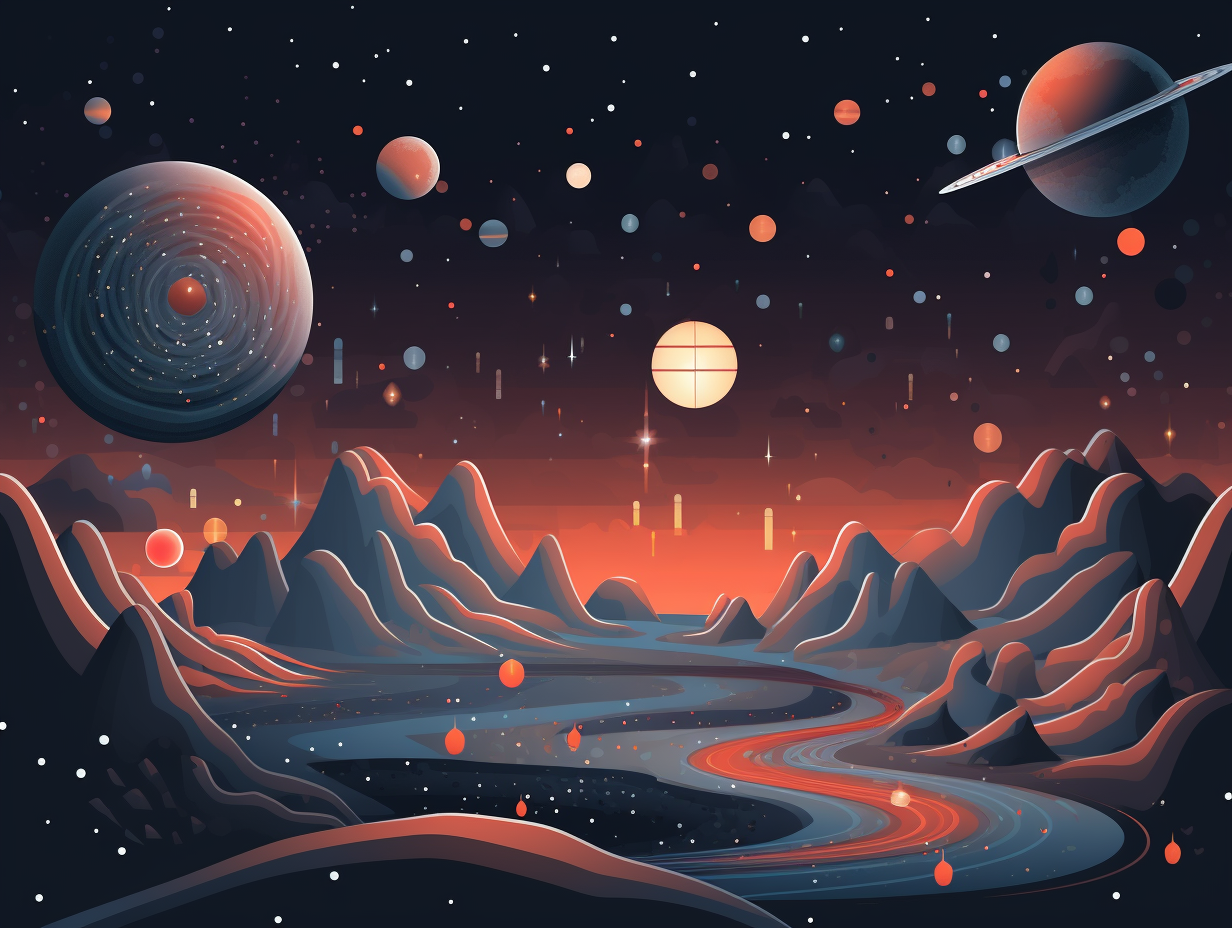
10. Moon-Eclipsing Asteroids
Hold onto your space pants, because this asteroid fact might just send you over the moon: The total mass of the asteroid belt is a mere 3% the mass of our Moon, with Ceres, the asteroid belt's largest object, boasting a diameter of around 950 km.
Source => en.wikipedia.org
11. Ceres: The Cosmic Artist
Ceres-ly impressive: this dwarf planet is quite the cosmic artist, sculpting icy mountains, painting bright spots and even dabbling in cryovolcanic eruptions! It's no wonder that space enthusiasts are over the moon about Ceres, the largest object in the asteroid belt, and its partially differentiated interior, potential icy mantle, rocky core, and strong crust - making it a possible habitat for some out-of-this-world microbial life.
Source => en.wikipedia.org
12. Meteorite Reunion Party
Where do meteorites go to party? The inner asteroid belt, of course, which apparently loves a good reunion: About 85% of the asteroids in this region come from just five or six ancient minor planets formed during the early stages of the solar system. This cosmic "whodunit" helps scientists unravel the mystery of asteroid origins and keep an eye out for those that might pose a threat to our Earthly shindig.
Source => news.ufl.edu
13. The Big Ceres Show-Off
If the asteroid belt ever threw a party, Ceres would undoubtedly be the life of it, hogging the limelight with its massive presence: This dwarf planet is the largest object in the asteroid belt, boasting a diameter of 950 km and accounting for a whopping 30% of the belt's total mass, while the next three biggest asteroids – Vesta, Pallas, and Hygiea – together only make up a measly 7% of the mass. To top it off, the entire asteroid belt's mass is a mere 3% of the Moon's, making this celestial shindig much less crowded than astronomers first thought.
Source => en.wikipedia.org
14. Goldilocks' Asteroid Dance
Move over, Goldilocks and the Three Bears, there's another celestial neighborhood just waiting to be explored: The asteroid belt boasts over 1 million known asteroids, ranging from pebble-sized princesses to downright dwarf planet divas, all cha-cha-cha'ing between Mars and Jupiter. Scientists continue to study this rocky tango to better grasp our solar system's origins, protect Earth from potential danger, and possibly mine these cosmic cookies for valuable resources like water and metals.
Source => arxiv.org
Related Fun Facts

